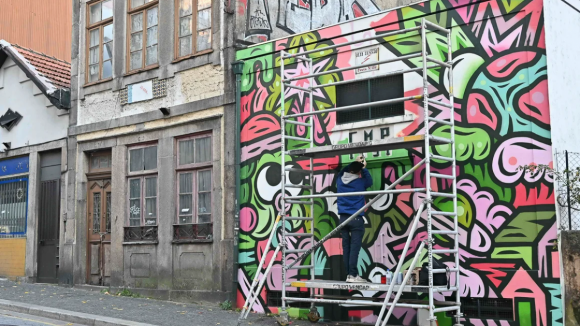- Home
- Tourism
Three urban artists took the cans and filled the walls with shapes and colors, offering the city new murals of art.

The streets O Primeiro de Janeiro, Calçada de Monchique and Faria Guimarães have new reasons to visit. Three urban artists took the cans and filled the walls with shapes and colors, offering the city new murals of art.
Inês Risca chose a tribute to the feminine to illustrate the old transformation station, from 1915, next to the Bessa stadium. “A Primavera” shows the joyful face of a girl holding hands and eyes hopeful for a world with more compassion among women themselves.
“In this work, I want to convey a message of compassion and sisterhood that reminds us that we are all at different times on the same journey. Pomegranates are a classic symbol of fertility. It is in a fertile and free soil that we cultivate compassion”
The art that gives color to Rua da Calçada de Monchique, near Alfândega do Porto, is the work of João Domingos, an artist who signs as Bigod. And the inspiration really comes from there, from that once mercantile area of the city. On those walls you can now see the piece “Mercadors”, where a Rabelo boat goes on a mission to transport the barrels of Port wine.
“When I started to paint the building, people did not understand the context of the intervention very well because my work at the beginning is very geometric and colorful, and after starting to use the stencil, the message became clear and was received with the best pleasure. possible”, acknowledges Bigod, happy for the “opportunity to make a piece [called Mercadores] in Porto, in a city that I identify with and where urban culture already has a great expression in Portugal”.
The third piece of urban art is called “Mad World” and occupies a wall on Rua de Faria Guimarães. Painted by Nuno Barbedo, known for The Caver, it reveals the “danger and discomfort” of the “chaotic state in which the world is currently, with wars and global warming”, explains the artist.
The Caver assumes the gratification for the incentives he received during the three days it took to complete the work.
“I even received photos on my instagram of neighbors thanking them for work outside their house”.
Source:
Porto Canal